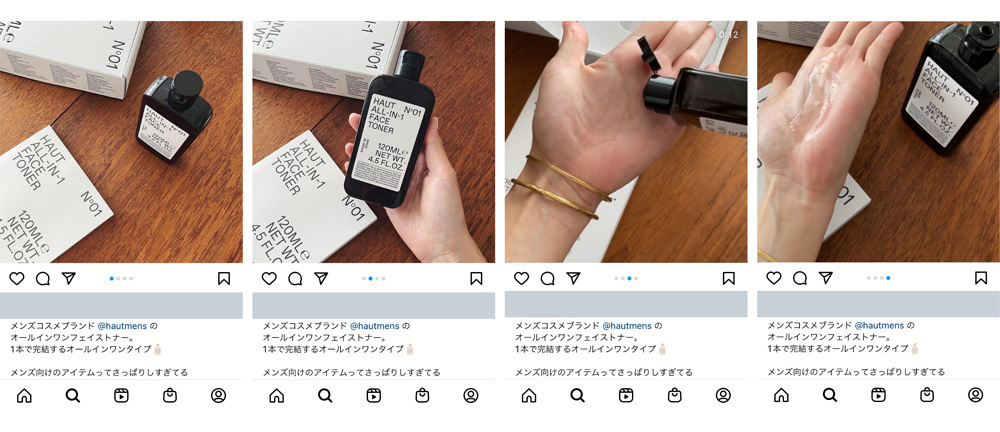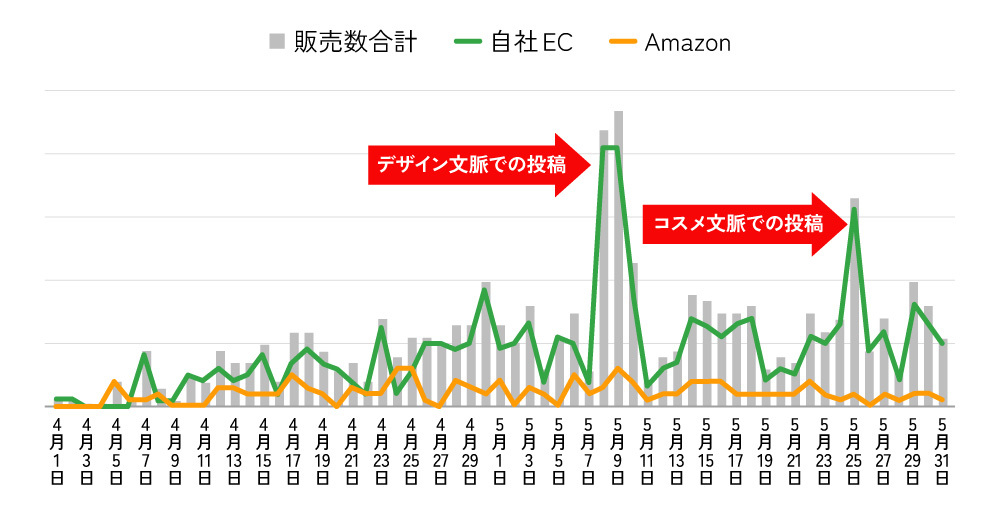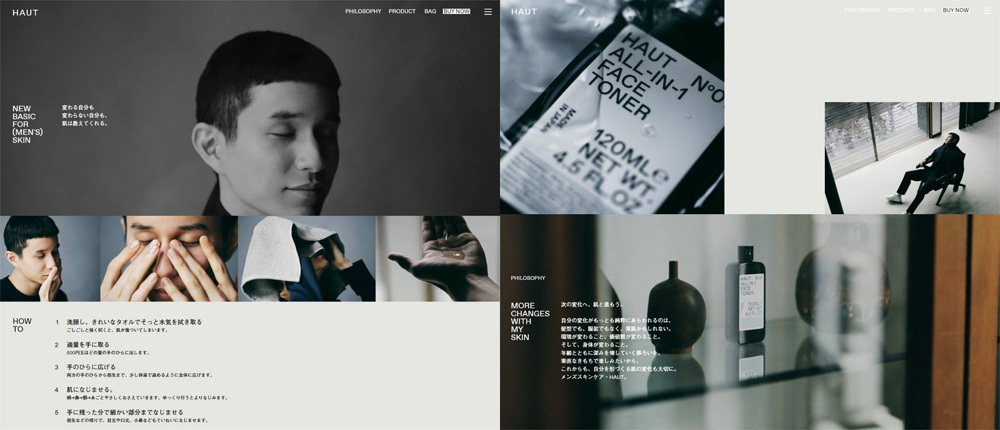Note: This website was automatically translated, so some terms or nuances may not be completely accurate.
A company supporting D2C Inc. practices social commerce itself! What insights were gained?
We introduce this intriguing initiative: a company that supports corporate D2C Inc. marketing launching its own brand and practicing D2C Inc. marketing.
Our speaker is Junichi Kato of CARTA COMMUNICATIONS Inc. (hereafter CCI). As a brand producer, Mr. Kato launched the men's skincare brand "HAUT" in 2021. This article focuses specifically on "social commerce" within this initiative, detailing how the brand story was built on social media and highlighting the importance of customer experience (CX) derived from its validation.
CARTA COMMUNICATIONS Inc.
Founded in 1996 as Cyber Communications Inc. Beyond its core internet advertising business, the company has expanded its digital solutions portfolio to include data marketing/consulting and D2C consulting. In the e-commerce domain, it offers "Commerce Container," a comprehensive one-stop service providing holistic support for various challenges prone to partial optimization, such as "promotional strategy development," "store construction," and "advertising-driven customer acquisition."
The first step in social commerce begins with "concept design."
Since 2021, CCI has produced and sold the men's skincare D2C Inc. brand "HAUT". Our goal in launching this brand and practicing D2C marketing ourselves was to evolve our one-stop e-commerce support service "Commerce Container" into a service more aligned with the perspectives of both clients and end customers.
"HAUT" is an all-in-one skincare product developed specifically for men's skin, combining the functions of toner, emulsion, and serum into a single bottle. For an item meant to be close at hand in daily life, the design concept uses minimal yet impactful typography. It blends into interiors like an art book, evoking a sense of a richer lifestyle.

In the rapidly growing e-commerce market, securing effective pathways to guide consumers online toward a brand's products and services, ultimately leading to purchase, is crucial. Among these, "social commerce" is actively utilized. This involves brands communicating with consumers on social media platforms like SNS, seamlessly connecting product awareness to purchase.
HAUT was designed with social commerce in mind, featuring impactful designs and packaging likely to generate buzz on Instagram. The brand centered its service around its own e-commerce site built on the Shopify platform and sales on marketplaces, primarily Amazon.
For promotions, Instagram served as the primary platform, implementing the following strategies:
【Account Management】Focused on deepening engagement with followers
・Showcasing products using multiple visuals
・Post detailed information about ingredients one by one
・Posted images showing usage scenarios and interior styling

【Advertising】Tested multiple patterns combining various techniques
・Create multiple creative formats: feed posts, stories, videos, etc.
・Delivery tailored to whether the goal is link clicks or page follows
・Set multiple destination links to both our own e-commerce site and Amazon
Additionally, we collaborated with a PR agency to have influential Instagram influencers try our products and request posts about HAUT. Influencers were selected based on "recognition," "post format," and "follower count," and the effectiveness of each post was verified.
In social communication, generating "empathy" from "context" is crucial
As a result of various initiatives, traffic from Instagram directly boosted sales on our own e-commerce site, aligning with our social commerce-focused design. We also observed sales growth driven by content spreading from Instagram to Twitter. A major reason for this success was our adoption of simple yet bold visual design. This differentiated our products and led to unexpectedly high engagement, particularly from creative professionals like photographers and designers.
Another advantage of social media is the ability to gauge reactions to initiatives in real time through comments and reviews. We discovered that comments on posts also served a customer service function, as they included inquiries about products. It was also notable that sales inquiries and requests for tools came via Instagram DM (Direct Message), allowing us to experience a flow that can be leveraged for future product development and sales promotion.
However, several challenges were also identified. While we directed traffic from Instagram ads not only to our own e-commerce site but also to Amazon, the purchase rate remained low when directing users to the marketplace without prior product awareness, making it difficult to translate into actual sales. Consequently, for Amazon, we switched promotions to in-platform ads until brand recognition was established.
Regarding influencer promotions, we selected partners based on "fame," "post format," and "follower count." However, we learned that meeting these criteria alone doesn't easily translate to sales. The most effective approach was to have influencers who are knowledgeable about "cosmetics" and "design" carefully convey the product's appeal, ensuring texture and other features were clearly shown.

From its development phase, "HAUT" has been dedicated to enriching daily life through visual design and quality (ingredients, texture, etc.). We believe that when influencers knowledgeable about cosmetics and design carefully convey the product's story and background to their information-seeking followers using images and text, it helps them personalize the product. In other words, we learned that "context" is crucial in social communication; it's vital to be closely connected to daily life and to generate empathy.
Influencer posts directly impacting sales
Looking at the sales volume graph for "HAUT," we see significant spikes in sales whenever influencers featured the product, followed by a gradual, sustained increase afterward. As mentioned earlier, sales surged significantly when designers highlighted the excellence of the design within a "design context" or when cosmetics experts meticulously explained ingredients and features within a "cosmetics context." Furthermore, these sales increases occurred on our own e-commerce site, where we effectively conveyed the brand's worldview.


Furthermore, while implementing these strategies, we recognized the limitations of expanding awareness solely through online channels. However, inquiries began arriving via Instagram from various companies, including magazines and stores. This led to magazine features and the launch of pop-up stores.
Once we began offline expansion, we saw a ripple effect where online sales actually increased, highlighting the importance of offline initiatives.
Considering that magazine editors and distribution managers gather information via Instagram is also crucial when promoting on social media.
The key to social commerce success lies in enhancing the customer experience on your own e-commerce site.
Through this initiative, we strongly felt that Instagram-driven business is accelerating. Rather than traffic from traditional search engines, the path where customers search on Instagram, click the profile link to our own e-commerce site, and make a purchase now accounts for 60% of our traffic, and we feel this is increasing significantly.
Furthermore, 80% of purchases on our own e-commerce site come from mobile devices, making the mobile customer experience (CX) increasingly vital. Note that HAUT's site is built on Shopify.
Shopify has gained significant attention in recent years as a platform enabling the easy yet robust construction of e-commerce sites. Key advantages of using Shopify include mobile-friendly input forms and seamless integration with ID payment services like Amazon Pay, reducing form-filling effort and ensuring a smooth user interface (UI) from the cart onwards. Seamlessly transitioning from social media to checkout while minimizing abandonment is key to successful social commerce. Furthermore, by integrating with a WMS (Warehouse Management System) for shipping, we achieve same-day delivery in the shortest possible time, which we believe also enhances the customer experience.
To deliver a unique customer experience value that conveys HAUT's worldview, we included an explanatory booklet inside the product for the first 1,000 units and hand-numbered each cosmetic box with a unique serial number. This created a sense of exclusivity and specialness. As a result, we saw numerous posts from purchasers on social media about the booklet and numbering, demonstrating how "customer experience value" spreads through social channels.
In social commerce, while functional experience value is crucial, the customer experience value gained from purchasing a product or service—such as the "sense of exclusivity"—is the essence. Thus, leveraging social media is vital not only for skincare but across industries, making it an indispensable tool for commerce. Designing a comprehensive strategy encompassing social-centric promotions, website UI, and the overall CX of the purchasing experience is key for future commerce strategies.
Was this article helpful?
Newsletter registration is here
We select and publish important news every day
For inquiries about this article
Author

Junichi Kato
CARTA COMMUNICATIONS, Inc.
Media Solutions Division
Commerce Container Team Team Manager
After joining the company, I engaged in a wide range of responsibilities including overall digital advertising media planning and programmatic advertising operations. I served as the service manager for our e-commerce consulting service, "Commerce Container." I also served as producer for our in-house D2C Inc. brand HAUT, launched in 2021.


